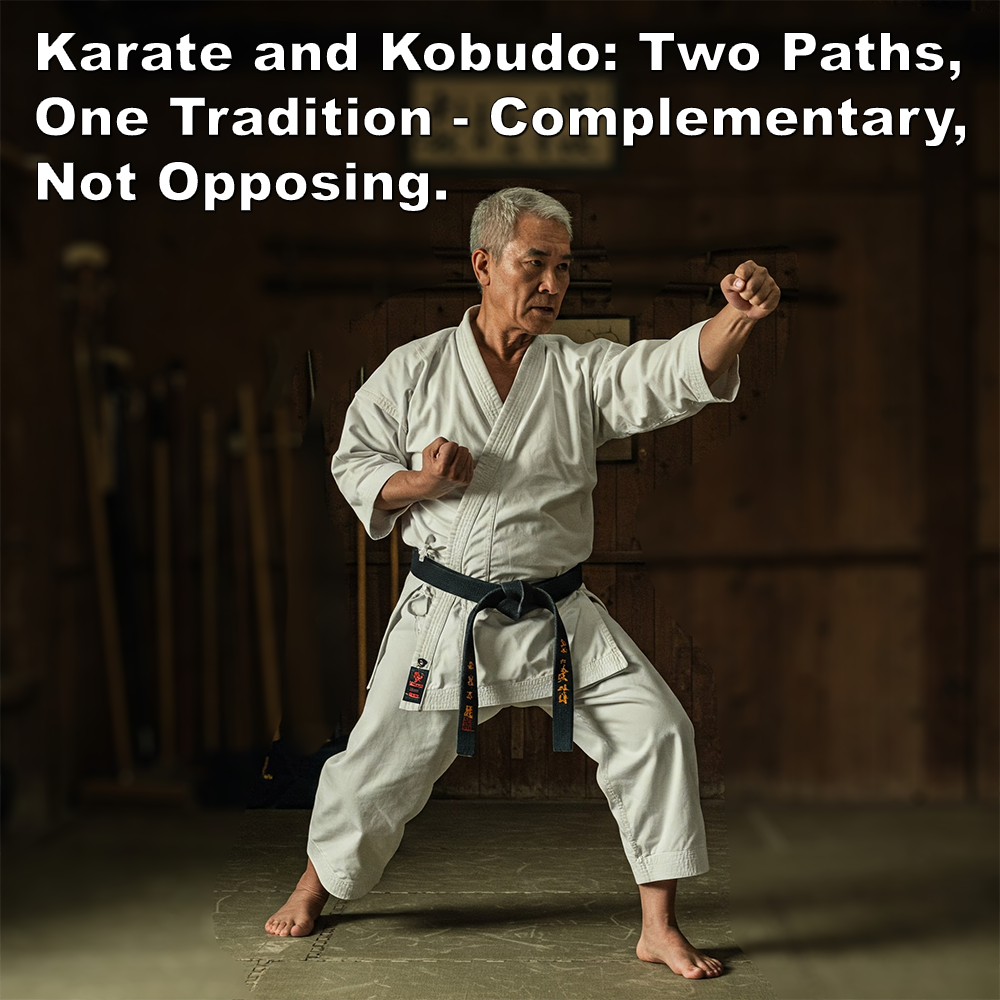
(Approx 2 minute 15 second read)
Someone commented on my recent article, suggesting that styles also reflect the “weapons reality” that an opponent might use.
.
He stated that “Okinawan Karate focused on empty hand fighting against weapons such as Bo, Jo, Nunchaku, Sai and Tonfa. This ‘weapons reality’ led to direct, close quarter, power techniques- ie. Goju-Ryu, Shito-Ryu and Uechi-Ryu.”
.
Wow, that’s a statement!
.
Styles within karate were not shaped by the weapons an opponent might use, but by the need to address real-world defensive situations – often without weapons. The different styles were created to develop effective strategies that suited the ideas of their creators, within the cultural and martial context of the time.
.
The development of techniques in Goju-Ryu, Shito-Ryu, and Uechi-Ryu as he mentioned, was not primarily influenced by the need to defend against weapons, but rather by the core principles of self-defense and martial philosophy, with weapons training serving a supplementary role.
.
Karate and kobudo are complementary, yet the way their relationship is discussed sometimes leads to misconceptions.
.
The idea that Okinawan karate was developed specifically to counter weapons, with its techniques shaped by the “weapons reality” of Okinawa, while this makes for an interesting theory, the historical truth is likely different.
.
Okinawan practitioners often trained in both karate and kobudo, but this does not mean karate was designed to fight against those weapons used in kobudo. Rather, both systems were parts of a broader martial culture where the same practitioners developed proficiency in both.
.
Kobudo was an adjunct to karate training, not necessarily creating a direct ’empty hand vs. weapons’ system.
.
I’m not sure where he got that Goju-Ryu, Shito-Ryu, and Uechi-Ryu developed their close-range, power-based techniques specifically as a response to weapons like the bo, sai, or tonfa.
.
In reality, the close-range nature of these styles is more likely influenced by certain Chinese martial arts, and indigenous methods already used.
.
Of course some karate techniques can be adapted to deal with weapons, but facing a weapon while unarmed was, and still is, a last resort. Traditional self-defense strategies emphasize preemptive action, escape, or environmental awareness rather than direct confrontation.
.
The reality is that if someone armed with a sai, bo, or knife, attacked you, the odds of successfully defending unarmed were – and still are – pretty slim. This is why, historically, many Okinawan practitioners were well-versed in both empty-hand and weapon-based combat. They did not train in karate to defeat weapons – they trained in weapons because fighting empty-handed against an armed opponent was a last-ditch effort at best.
.
Karate and kobudo were not meant to be opposing forces, with one directly countering the other. Instead, they developed alongside each other as complementary disciplines.
.
Of course the modern karate vs. karate discipline we mostly see today, where there are many demonstrations of defending unarmed against weapons, looks visually impressive. But karate evolved primarily as a self-defense system for dealing with common threats, and only secondarily as a method of dealing with armed opponents.
.
Understanding this relationship shows both arts as part of a broader martial culture – one that emphasized practicality, adaptability, and effectiveness rather than rigid distinctions.
.
Being aware of weapons in self-defense is always important, but karate wasn’t necessarily built around countering them.
.
.
Written by Adam Carter
